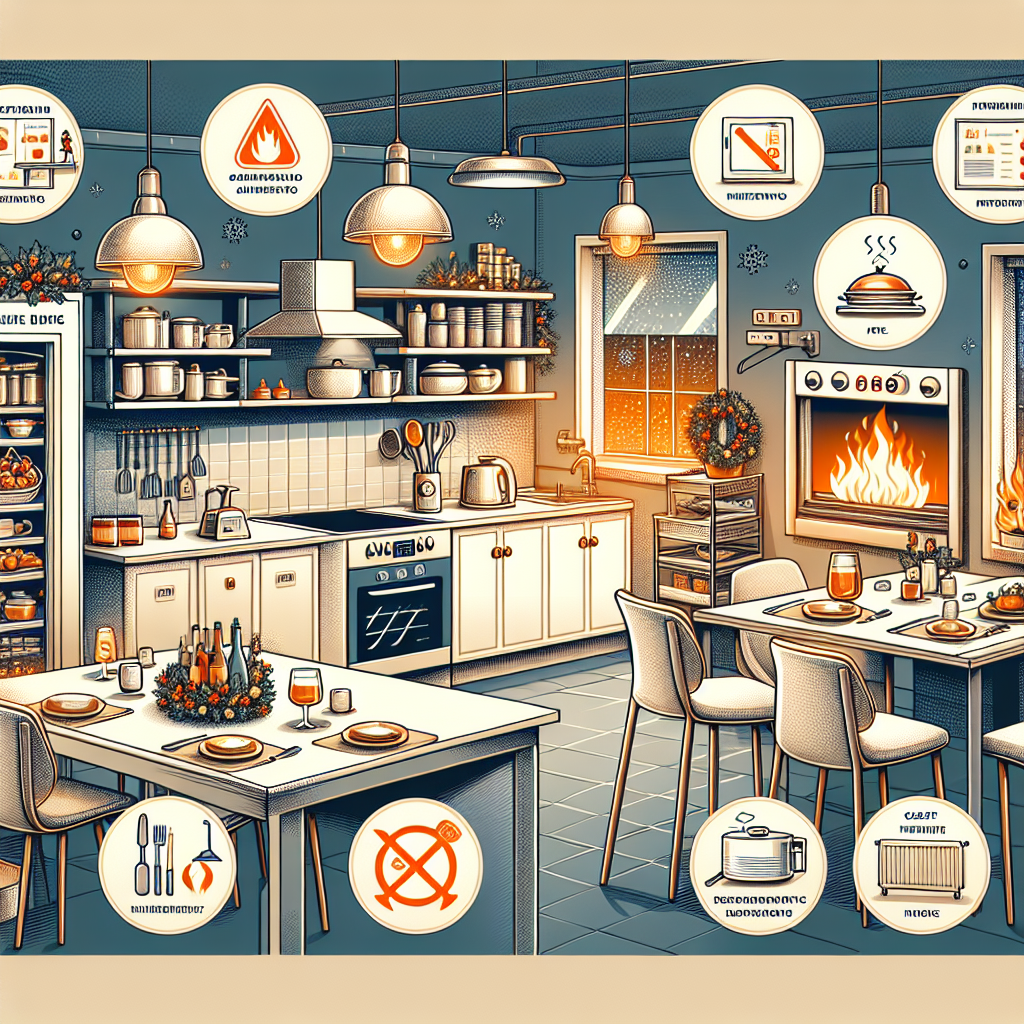According to the California Fire Department’s holiday safety information, cooking-related fires are the leading cause of residential fires, followed by heating equipment. Therefore, taking some simple preventive measures to ensure kitchen safety and keeping flammable materials away from heat sources are crucial for families to have a relaxed and enjoyable holiday.
The National Fire Protection Association data shows that the number of home cooking fires during Thanksgiving increases by 240% compared to regular days. “Multitasking, crowded kitchens, and sizzling hot oil are simply a perfect recipe for disaster.”
Statistics from SafeHome show that there are an average of 87,877 cooking-related residential fires in the United States each year, causing approximately $570 million in property damages. A survey found that 96% of people get distracted while cooking, 34% leave food cooking unattended when they are away, 36% of households do not have fire extinguishers, and only 14% of people say they check smoke detectors every month.
How to prevent cooking fires? People should stay in the kitchen while cooking, and avoid distractions like using their phones or watching TV. Use a timer or alarm to remind you of cooking times to prevent food from burning or pans from drying out. Keep flammable materials away from stoves, regularly check kitchen smoke detectors, and try to avoid indoor deep-frying turkey.
According to the California Fire Department, around 1,200 Californians are hospitalized for burns during the holiday season each year, and 60% of holiday burn accidents are related to hot liquids or cooking.
How to prevent burns? Simple preventive measures can prevent physical pain and lifelong disabilities, including keeping children away from stoves, placing pot handles inward to prevent tipping, using heat-resistant gloves, and being extra careful when handling hot food or drinks.
Candle-related home fires remain a serious safety hazard in households, with the U.S. fire department dealing with about 5,830 such fires each year. These fires result in dozens or more deaths, hundreds of injuries, and approximately $270 million or more in losses.
The causes of fires include: over 50% are due to flammable materials being too close to ignited candles; 21% are due to unattended candles, improper use during nighttime sleep, or other reasons; pets in the home may knock flammable materials onto burning candles, causing fires. Over one-third of candle fires occur in bedrooms.
Key safety measures are: choose sturdy, heat-resistant surfaces to place candles; keep them away from windows or vents to prevent blowing flames onto flammable materials; do not place candles in high-traffic areas. Fire safety regulations require candles to be at least 1 foot (about 30 cm) away from any flammable materials, creating a buffer zone to prevent curtains, books, papers, and decorations from igniting.
Every year in the United States, hundreds of fires are caused by Christmas trees, with over 50% of holiday decoration fires due to electrical circuit malfunctions or proximity of heat sources to dry trees. While the number of Christmas tree fires has significantly decreased to over 200 incidents since 1980 (down from nearly 800 per year), each 52 Christmas tree fires may result in one fatality.
In controlled tests, fire researchers found that dry Christmas trees can be engulfed in flames in less than 10 seconds; and once an unwatered tree is ignited, a “flashover” can occur approximately 70 seconds later. In contrast, well-watered trees typically prevent flames from spreading beyond the branches. Additionally, the likelihood of artificial Christmas tree fires is one-third that of real trees, but fire prevention should still be observed. ◇

